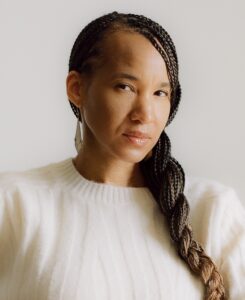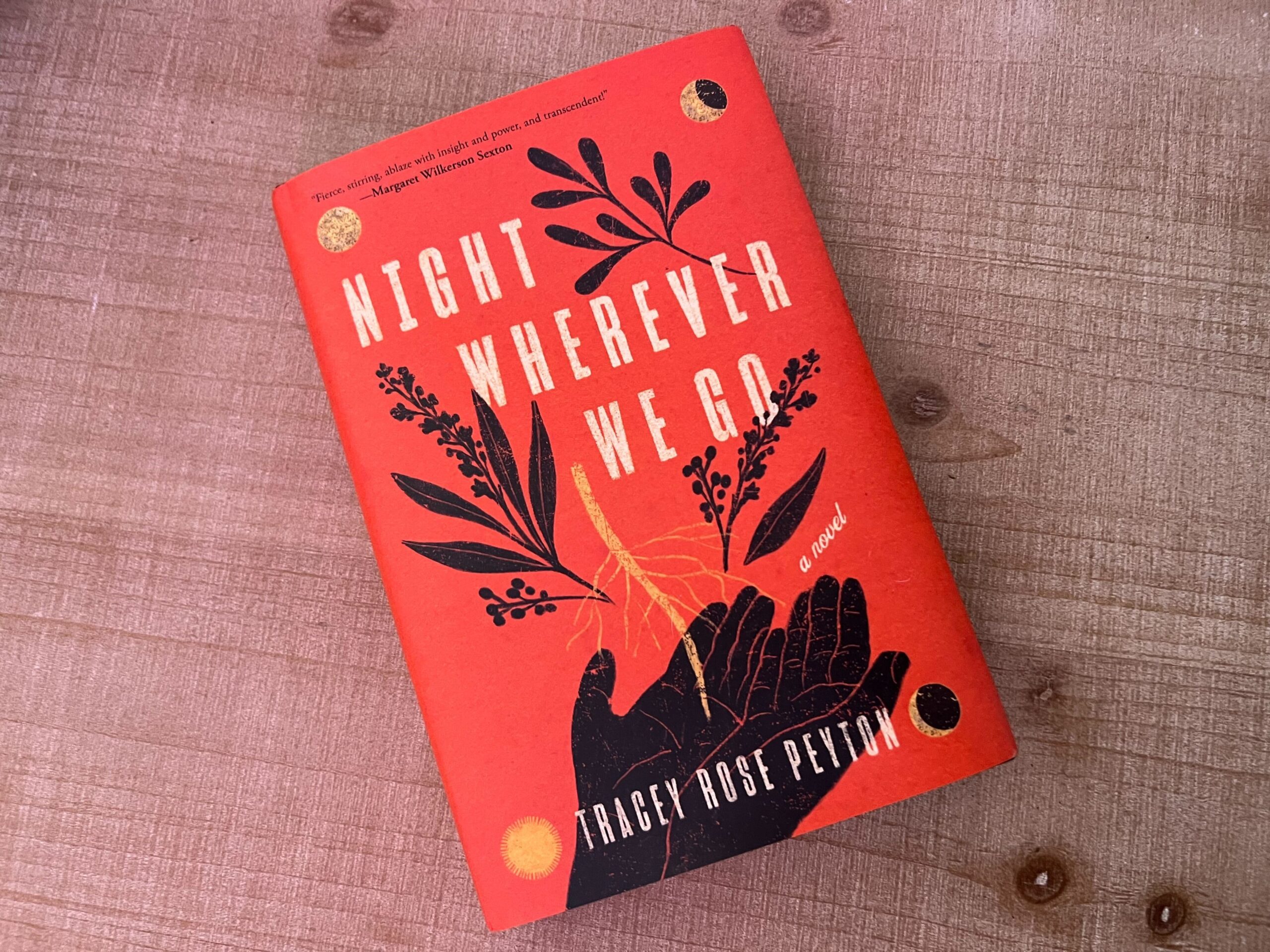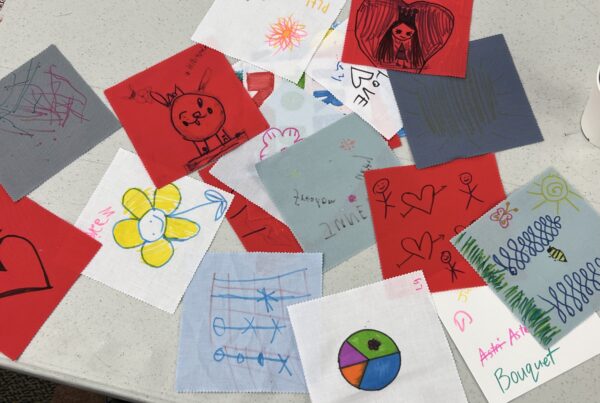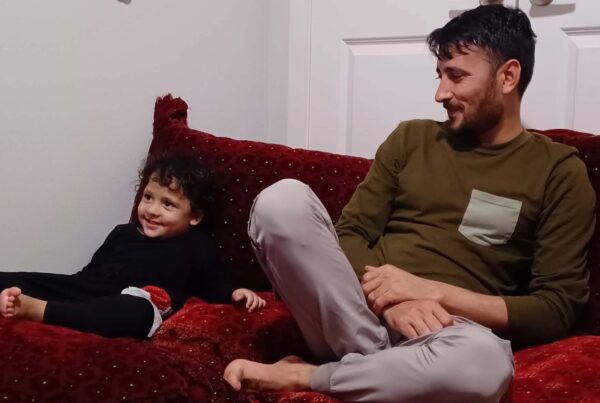Juneteenth marks a critical day in history for Texas and the United States.
On the shores of Galveston in June of 1865 came a military order informing enslaved people in Texas that they were freed – more than 250,000 of them.
Tracey Rose Peyton portrays the injustices of the time before Emancipation Day through the eyes of six enslaved women in an act of collective defiance in her debut novel “Night Wherever We Go.” Peyton spoke with the Texas Standard on the research that went into her book, the characters she centers the story around and the community they build, as well as how the struggle for reproductive rights in her historical fiction novel ends up resonating more today than she expected.

Tracey Rose Peyton, author of “Night Wherever We Go.”
Photo by David Katzinger
Listen to the story above or read the transcript below.
This transcript has been edited lightly for clarity:
Texas Standard: This is, I guess one would say, historical fiction. You’re transporting readers to this time period. And I guess even though the characters are formally fictionalized, you did a lot of research into building this world – extensive research. Could you tell us a little bit about that process and what you learned?
Tracey Rose Peyton: I mean, I’d say the novel started with reading historian Paula Giddings’ “When and Where I Enter.” And in it, she covers this moment in history where there are four or six women on a plantation in kind of what we think is probably Tennessee, where the women engage in collective resistance, they use our herbal abortives to thwart any kind of attempt to “breed” them. And for 20 years, the women managed to control the birth rate on the farm. It’s only after that period that they realized that there was a “old woman” who was giving them an herbal remedy.
And so I was really inspired by that story. And then when I moved to Texas for grad school, I got really interested in how slavery was so important to kind of the making of Texas and why I had never thought about that as being kind of connected to the empire of slavery before. And yeah, those two things together kind of culminated in this novel.
A lot of that story of, as you describe, “the empire of slavery,” isn’t told. A lot of Texans don’t know a lot of details in that story. But from someone who has studied and researched this subject, did you come across anything that surprised you?
Yeah, I think I didn’t understand how much of a foundation that it was. I think there are a couple of historians that have done a lot of work to really think about the expansion of the cotton boom in the early 1800s and how that desire for, you know, more land to grow more cotton and to kind of participate in that boom kind of expanded into Texas and how that really shaped the political forces around Texas and leading up to secession and everything afterward. And I think that was something I just didn’t know. And I just feel like it just really kind of changed my understanding of the West.
Let’s talk a little bit more about the book that you’ve written. Could you tell us about a couple of the women that we meet in the book and the community they bring to each other?
Sure, sure. I feel like the anchor of the book is Sarah. She is about 17 when the book starts and she is young and kind of naive and she doesn’t necessarily understand what the older women know about the institution and kind of how it can affect your life.
There is Nan, who is the midwife, and she is the person who is well past childbearing age, but she is kind of a doctoring woman – she’s a healing woman on the farm. She understands a lot about herbs and plants, and she is the woman who kind of understands how those things can be used for good.
There’s also Julie, who is a woman who has been with the white family the longest. She grew up with the mistress of the family. And so she has a more delicate and kind of almost intimate relationship with Lizzie, who is the mistress of the farm. And that’s kind of like an interesting dynamic to explore.
Is there anything that differentiates the experience in Texas from, say, other states in the South, or was this rather universal? I mean, when people are reading this book, are they getting a sense of how this institution was experienced across the South? Or is there something unique about that Texas experience?
Yeah, I mean, part of my interest in the book is that I think there’s so many experiences and I think a lot of times we discuss slavery as if it’s a monolithic experience. And so understanding it as if you’re in a place like Texas – which at the time, you know, may have more rural, more frontier – your experience is going to be different than someone who is in Georgia or in Virginia. And if you’re working, you know, wheat or cotton versus sugarcane, it’s different than someone who is maybe an urban enslaved person who is maybe a blacksmith.
So people’s experiences were very different depending on where they were. You know, what flora and fauna is around them, what danger. You know, people were often scared of like wolves and panthers because they were so rural. So those things inform it and form your experience. But also the question of if you’re a smaller farm versus a large farm. And one of the things this book explores is a super small farm like where a lot of slaveholders on less than ten people, and I feel like most of the time are our of slavery is like, you know, Monticello on Mount Vernon, these kind of palatial estates. And that wasn’t true for a lot of slaveholders.
I’m sure you remember about ten years or so ago when the movie “12 Years a Slave” was released. There was a real pushback from a lot of Black people to have more than just the traumatic stories of this time told in the media. How much of that sort of loomed in your own consciousness as you were writing this book? And did you feel that there was some dimensionality that needed to be told here that hasn’t really been explored?
Yeah, I did. I mean, I think what came out of that was a lot of conversations about, I guess, what people call, “trauma porn.” And so I was, you know, very concerned about what some scholars talk about spectacle, right? Like how you render the horrific and making sure that I took care of readers when/if I had to kind of delve into something that was kind of like dark and awful.
But at the same time, I think I was so interested in the women’s relationships with each other and how their situation affected their relationships with their spouses or their partners or their children. And I feel like those are some of the other things that I think sometimes when people are saying this question about the spectacle of the trauma that they want to understand the other parts of the experience. They want to understand the complexity of the experience. They want to extend the depth. And that was something that I was wrestling with, too, and just hoping to kind of maybe include in the work itself.
I’m intrigued when you say you felt a need to take care of the listener. And I’m curious, what are you hoping that readers will take away from your new book, “Night Wherever We Go”?
I mean, I’m hoping people just have a new complexity or new understanding, I would say, of that period. And when I say that, I mean I’m not even trying to present this experience as the experience. I’m just trying to present it as one of many. And I think that’s kind of the biggest thing.
I think I’m trying to kind of like punch a hole in a little bit, just let us remember that there are multiple experiences to this and understand that if there’s anything that we think we understand about it, we should look deeper and try to make sure that there aren’t other parts of the story that we’re missing.
Quite often, whether you’re talking about historical fiction or you’re talking about history as it’s curated, it feels like something from the past. And I’m curious how you think these stories may well help people see today, in a sense.
Yeah, I think especially because the story ends up centering bodily autonomy and like, this question of reproduction and forced reproduction. The book ends up being more relevant than I expected it to be to our current moment in terms of, you know, the questions that we’re having around abortion rights and the Dobbs decision, etc.
And I think what it reminds us is that these battles are very long battles – like these things didn’t just come out of nowhere. And that if we don’t kind of understand how we got to this point, if we don’t understand kind of where these questions about who gets to control reproduction, where those questions started and what those questions were initially about, I think sometimes it’s hard to understand what’s currently happening on the ground.














